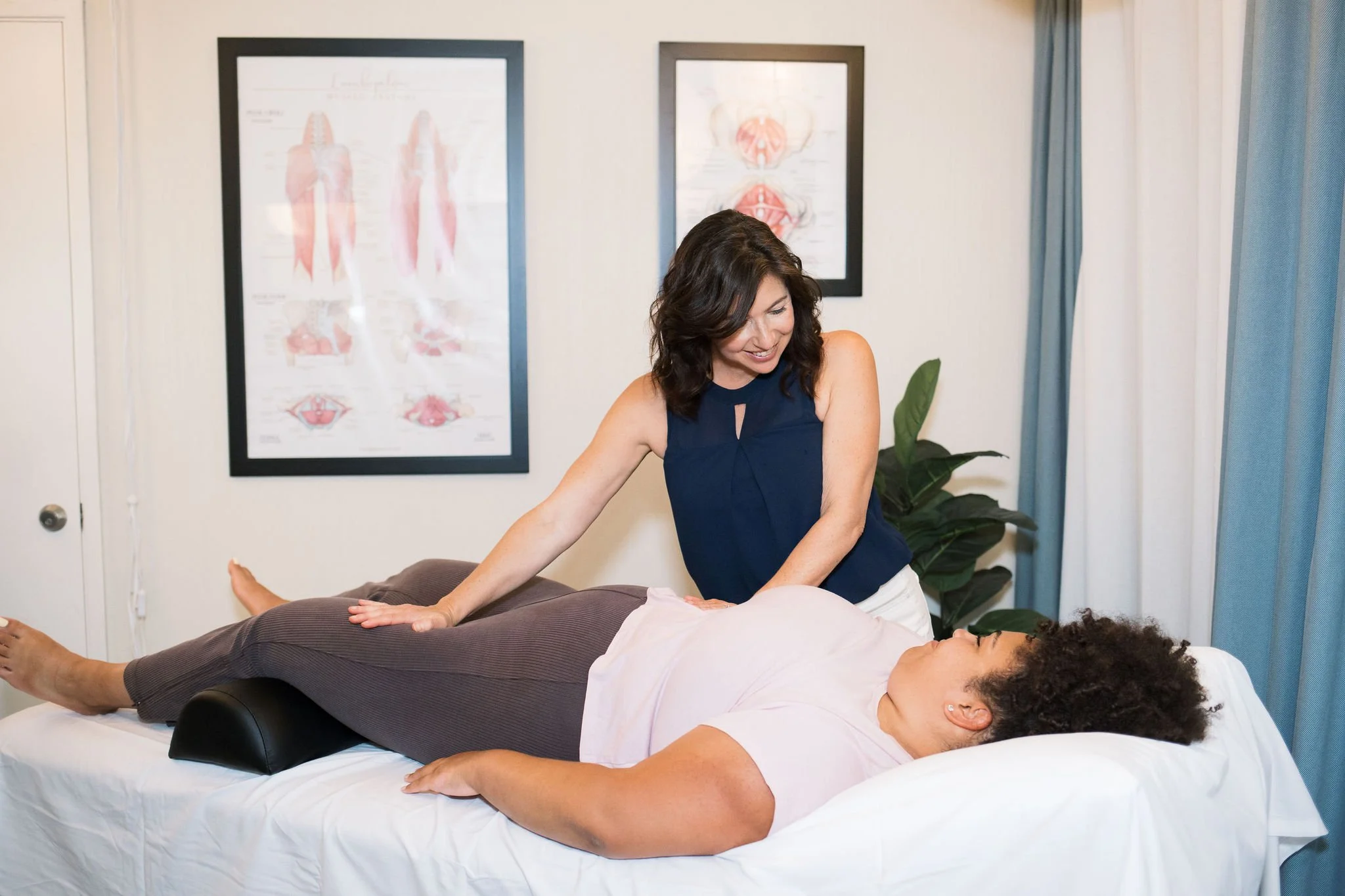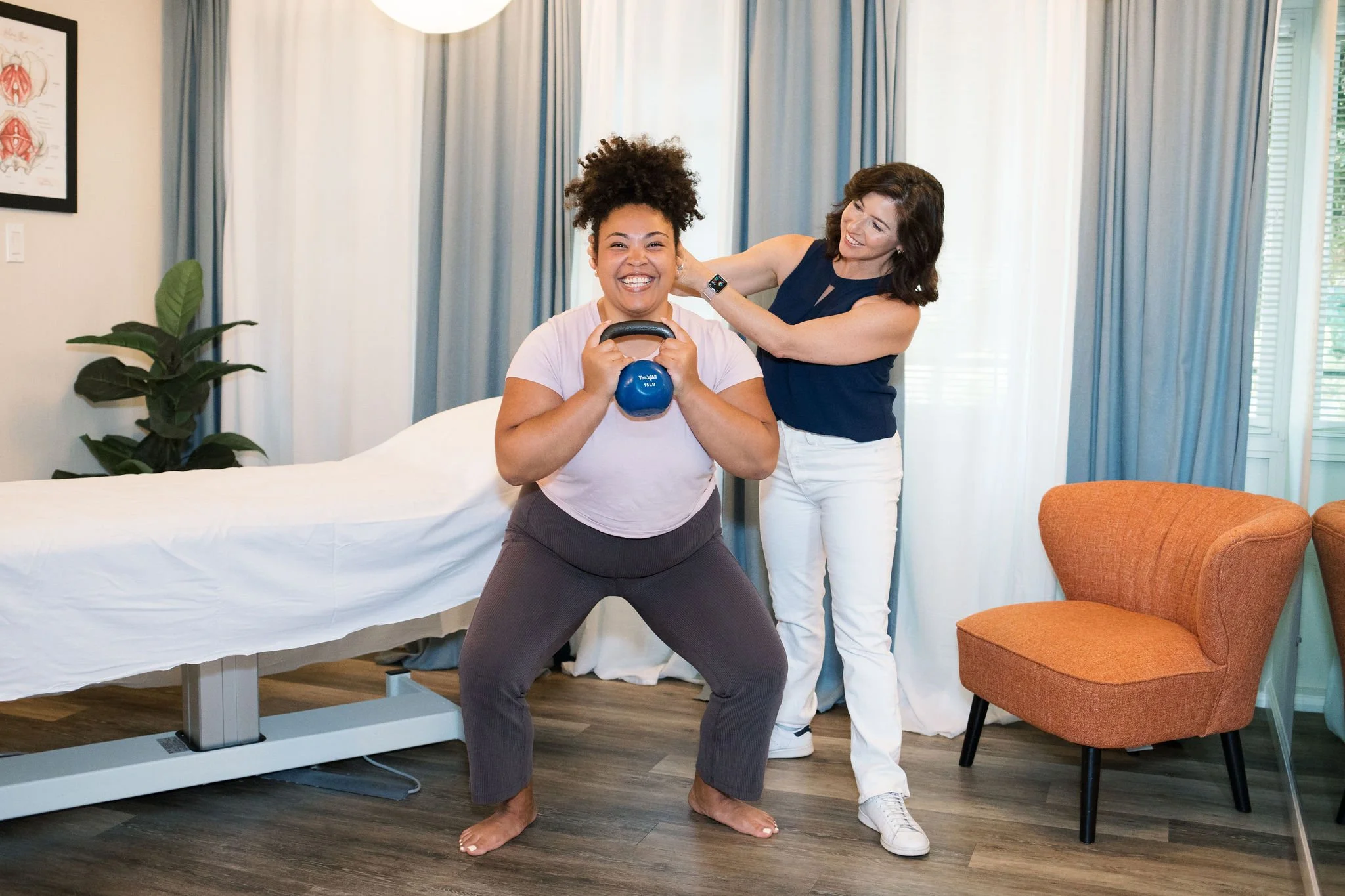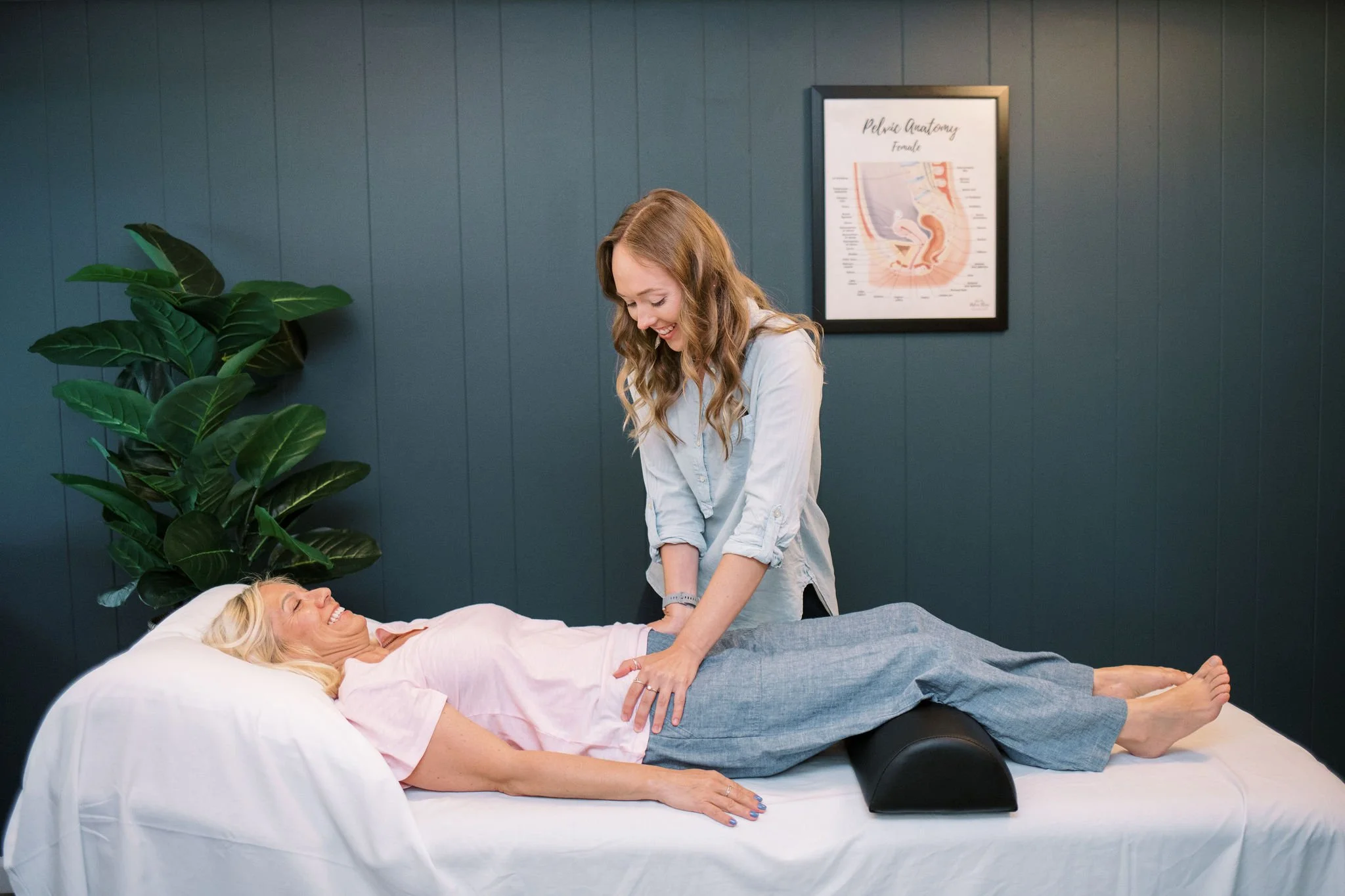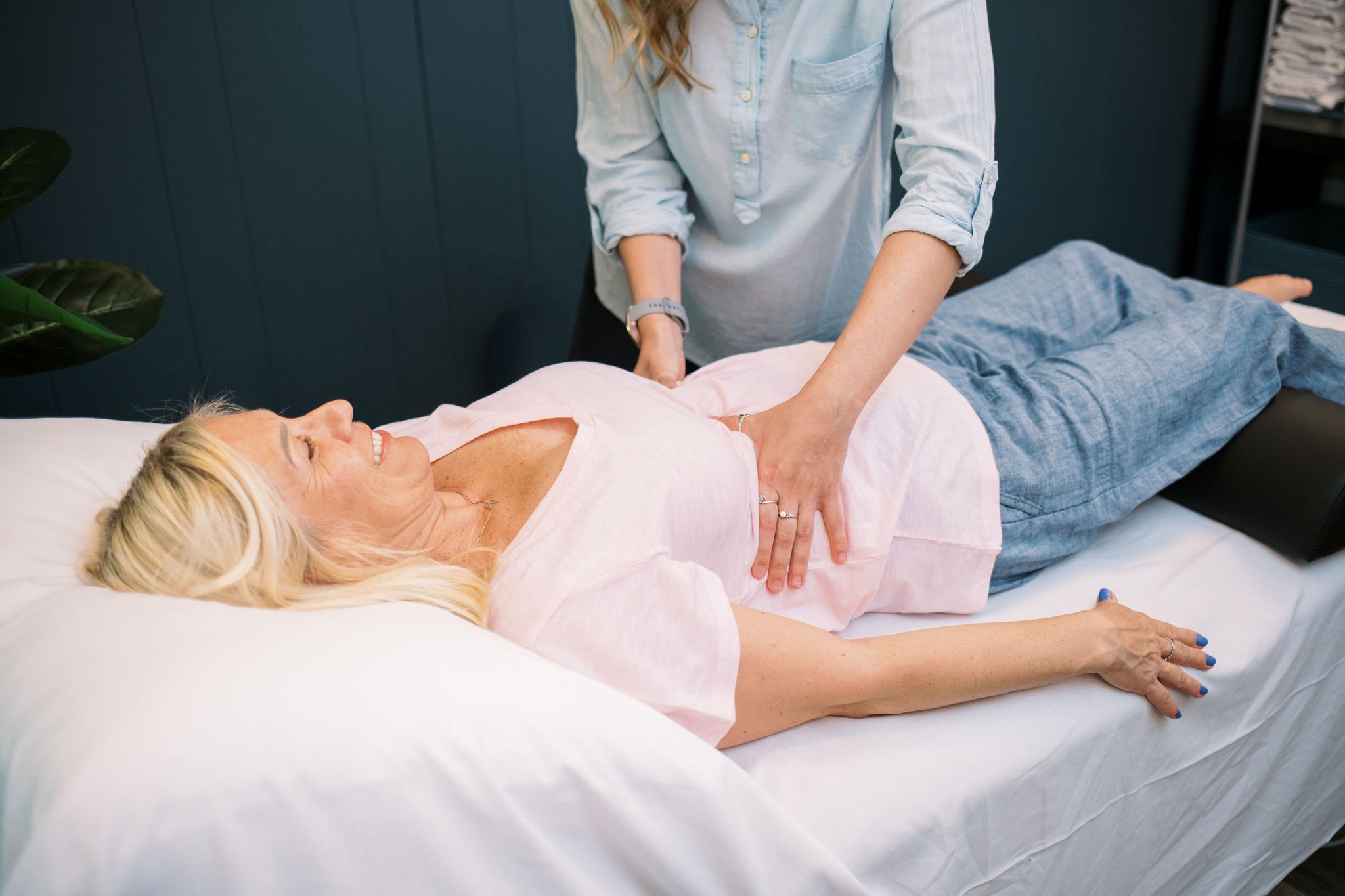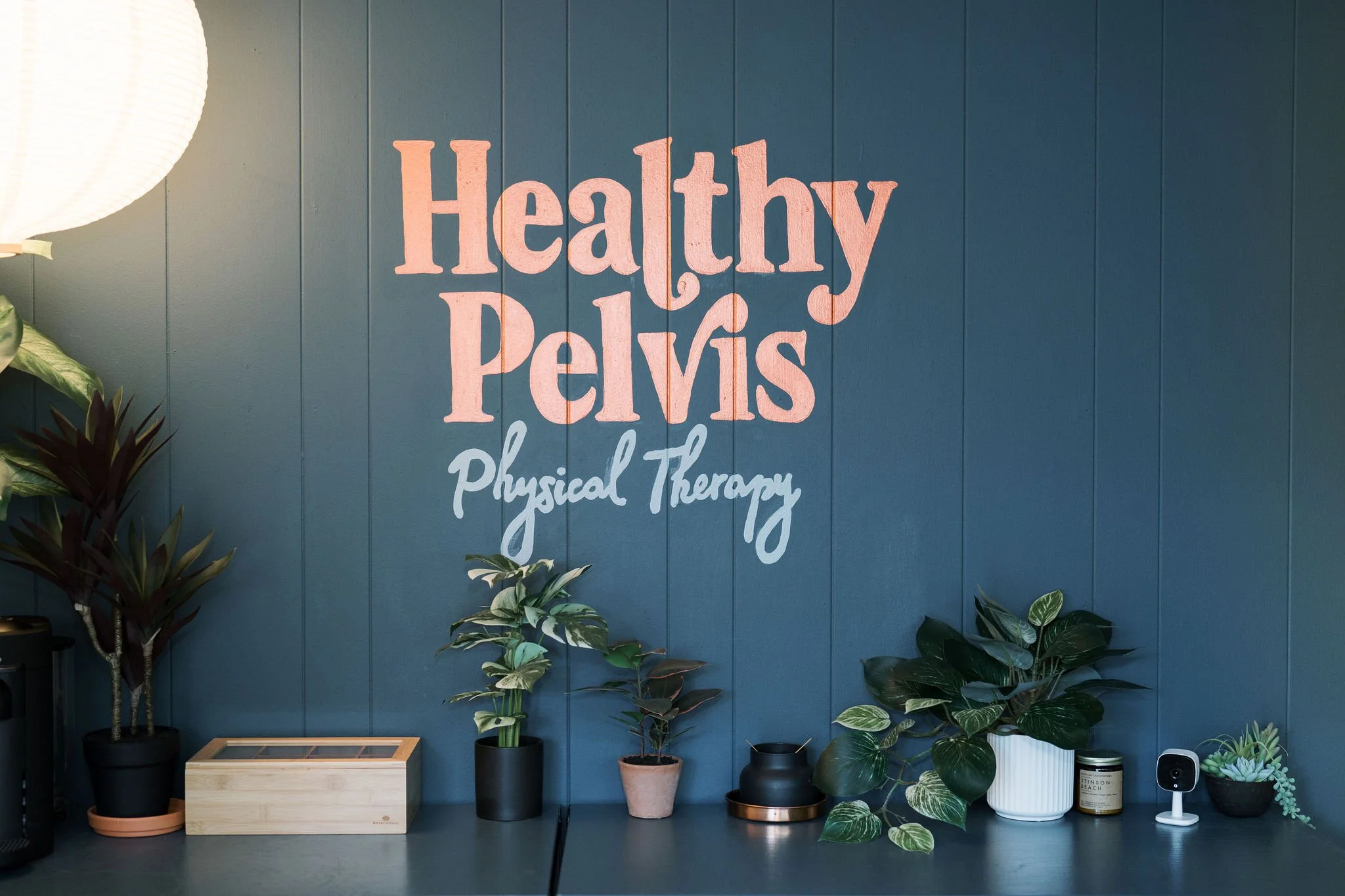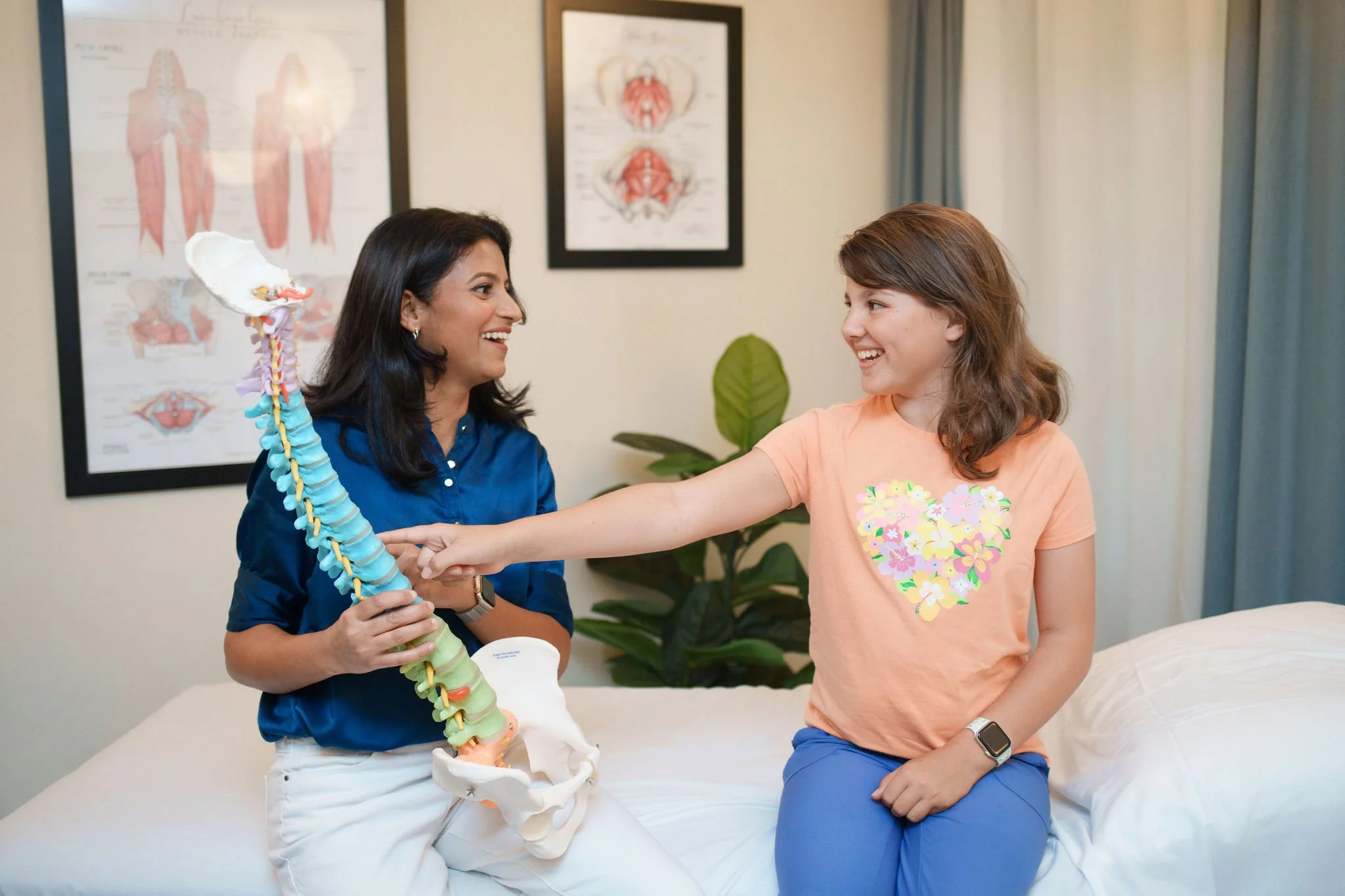
TMJ/TMD
Free Your Jaw — and the Rest of You
Relieve jaw tension, improve mobility, and ease related pain.
Jaw pain, clicking, or tension can radiate through your head, neck, and even your pelvic floor — but relief is possible.
We Treat
Jaw pain or tenderness in TMJ joints
Clicking, popping, or grating sounds
Difficulty chewing or opening your mouth
Jaw locking, headaches at temples or skull base
Key Facts
General Population: TMJ disorders affect approximately 5-12% of the population.
Women vs. Men: Women are 2 to 4 times more likely to develop TMJ disorders than men.
Age Group: The highest prevalence is among women aged 20-40.
Severe Cases: Chronic and severe TMJ disorders (often requiring medical intervention) are 9 times more common in women.
Why Women Are More Affected
Hormonal Influence: Estrogen may affect the TMJ and pain sensitivity.
Hypermobility: Women have greater ligament laxity, which can contribute to joint instability.
Higher Prevalence of Bruxism & Stress Disorders: Clenching and grinding are often linked to TMJ dysfunction.
TMJ & Pelvic Floor Connection
Fascial Link – Jaw, diaphragm, and pelvic floor are interconnected.
Posture – Poor alignment affects pelvic stability.
Stress Response – Clenching and pelvic tension often coexist.
Breathing – Dysfunctional breathing disrupts core-pelvic function.
Shared Conditions – EDS, fibromyalgia, and anxiety impact both.
Our Approach
We use joint mobilization, soft tissue release, and posture training to reduce strain, restore jaw mobility, and ease related discomfort. Here are all of the ways PT can help:
Manual Therapy
Joint Mobilization: Gentle hands-on techniques improve TMJ movement and alignment.
Soft Tissue Massage: Relieves tension in the jaw, neck, and surrounding muscles.
Myofascial Release: Targets trigger points in the masseter, temporalis, and pterygoid muscles.
Exercises for TMJ
Controlled Jaw Movements: Improves coordination and reduces clicking or locking.
Isometric Strengthening: Builds muscle support around the joint.
Tongue and Posture Training: Helps maintain proper jaw positioning.
Postural Correction
Many TMJ issues are linked to poor neck and head posture. PT addresses:
Forward head posture (which strains the jaw)
Upper back and neck alignment
Ergonomic corrections for daily activities
Pain Management
Cold/Heat Therapy: Reduces inflammation and muscle tightness.
Education & Habit Modifications
Avoiding excessive gum chewing, nail-biting, and jaw clenching
Relaxation techniques to reduce stress-related jaw tension
Breathing exercises to decrease jaw tightness
Coordination with Other Providers
Collaboration with dentists for bite alignment or splints
Working with orofacial pain specialists for complex cases
Your First Visit
Detailed history + TMJ assessment
Immediate manual therapy and posture strategies
Many notice improvement after the first session
Direct Access
No referral needed—California law gives you direct access to physical therapy. You can book with us anytime.
Insurance & Rates
We operate out-of-network to provide the highest quality care without restrictions.
PPO plans: Pay at the time of service; we’ll provide a superbill you can submit to your insurer for reimbursement (typically 30–90%).
HSA/FSA: Accepted.
HMO plans: These plans generally do not reimburse for out-of-network care, but many patients still choose to see us for the high-quality, specialized care we provide.
Rates: You can view our current rates anytime in the scheduling tool.
Improve jaw mobility and reduce discomfort—start your treatment today.
*Booking Note: For TMJ/TMD issues, book with Aly or Naz.
Jaw Pain and Pelvic Issues? They're Connected.
Download our one-pager to learn how TMJ and pelvic health are linked.

